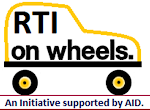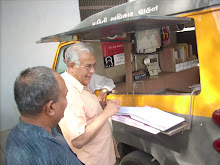Moneylife: Punjab: Thursday,
30 July 2020.
Last
week, news reports stated that Punjab’s State Information Commission (PSIC),
had, despite the Covid-19 lockdown, disposed of 1,231 second appeals and
complaints, of which 792 were heard through video conferencing of the National
Informatics Centre (NIC) in district headquarters, 277 through CISCO WEBEX and
438 new second appeals or complaints were registered.
All this
only in the month of June 2020! That’s an impressive score indeed, considering
the Maharashtra State Information Commission (MSIC) during the same period
managed to dispose of barely 120 to 150 cases through using the same
technology.
Or so I
thought, before I decided to go through the CIC orders of the Punjab State
Information Commission by visiting its website http://infocommpunjab.com where
a string of CIC orders in PDF file format are available. After reading through
several of them, I found a common pattern of a dubious nature as the CIC orders
do not abide by the RTI Act’s basic requisites of transparency.
This
means that the mere one and a half or two-page order does not contain the
nature of information sought by the RTI applicant, or the grounds on which the
public information officer denied information, what the order of the First
Appellate Authority (FAA) was. The CIC orders only state whether or not the
information sought would be provided, leaving the reader guessing as to what
the actual CIC order is.
Here’s
an example of the 27th July order by the CIC Preety Chawla:
``The
RTI application is dated 06.01.2016 whereby the information-seeker has sought
information as mentioned in his RTI application. He filed complaint in the
Commission on 23.03.2020 under Section 18 of the Right to Information Act, 2005
(hereinafter RTI Act).
``2.
Notice was issued to the parties for hearing for 27.07.2020 in the Commission
``3.
Today the Complainant is not present.
``4. The
Respondent states that the complete information has been provided to the
Complainant. He has filed vide Commission diary no. 8459 dated 20.07.020 a copy
of the receiving, given by the Complainant in lieu of receiving the
information. Copy of the same is taken on record.
``5.
Since, the information has been provided to the Complainant therefore, no
further cause of action is left. Hence, the Complaint Case filed by the
Complainant is disposed off and closed. Copy of the orders be sent to the parties.
``Sd/-
Chandigarh (Preety Chawla) Dated: 27.07.2020 State Information Commissioner
Punjab.’’
Here’s
one more order of 24th July by PSIC Suresh Arora:
``The
RTI application is dated 19.12.2019 vide which the appellant has sought
information as enumerated in his RTI application. First appeal was filed with
the First Appellate Authority (hereinafter called FAA) on 18.2.2020 and second
appeal was filed in the Commission on 27.5.2020 under Section 19 of the Right
to Information Act, 2005 (hereinafter called RTI Act). Notice of hearing was
issued to the parties for today.
``2. The
appellant states that the respondents may be directed to supply the
information. Whereas the representative of the respondents sent a letter
bearing No. 511 dated 22.7.2020 through email, which is taken on record. It has
been mentioned in the said letter that as per the decision of the Hon’ble
Supreme Court of India in SLP (C) No. 27734/2012-Girish Ramachandra Deshpandey
Versus Chief Information Commissioner and as per the circular issued by the
Government of India on 14.8.2013 and Appeal No. CIC (Appeal Nos. 243/ICPB/2006
and 244/ICPB/2006)- Sarvesh Kaushal Vs F.C.I. and others, it is exempted under
Section 8(1)(j) and no information can be provided.
`` 3. It
has also been mentioned in the said letter dated 22.7.2020 by the respondents
that the matter is under consideration. The representative of the respondents
was asked to clarify - whether the enquiry is in progress or the complaint
filed by the appellant is under consideration and no enquiry officer has been
appointed by the Department of General Administration.
4. After hearing both the parties, the
respondent-Public Information Officer is directed to file his response/reply
before the next date of hearing since the above mentioned cases are not
relevant in the present case as the appellant is simply seeking information
relating to the complaint filed by him only.
5. To come up on 26.8.2020 at 11.30 AM to be
heard through Video Conference Facility available in the office of the Deputy
Commissioner, Patiala/Cisco Webex.
D/
Dated:24.7.2020 (Suresh Arora) Chief Information Commissioner, Punjab.’’
Most of
the CIC orders not only in the Punjab Commission but in also Maharashtra and
Gujarat Information Commission are as superficial and opaque.
So, what
is wrong with the CIC orders? Legally
speaking, `judgment’ means the statement given by a judge of the grounds of an
order. As per the Supreme Court order in Balraj Taneja vs V Sunil Madan case,
every judgment should have the following - a concise statement of the case; the
points of determination; the decision thereon and; the reason for such
decision. CIC has quasi-judicial powers hence this format is applicable to them
too and also because the RTI Act demands transparency and comprehensive
information.
According
to Dr M Sridhar Acharyulu, former Central Information Commissioner, ``if the
CIC order does not give information about the nature of information sought and
the statement of reason for that, it is against the spirit of the RTI Act.
Reason for the order is `judgment’ and conclusion of the judgment is `order’.
And both have to be provided as people should know what the matter is and the
reasons for the order. Otherwise, we see that cabinet decisions are announced
with much fanfare but what went into those decisions is always kept hidden. RTI
gives the right to the people to expose reasons for those decisions. Similarly,
a CIC order must carry the information sought and the reason for the order.’’
As per
RTI activist Vijay Kumbhar, ``this is a very clerical approach to a CIC order.
Such a superficial format derails the very spirit of the RTI Act which
otherwise commands complete information. Even if I want to refer to that CIC
order, I would not be able to comprehend what it is all about. With technology,
the least they can do is attach the RTI application and the FAA order along
with the CIC order so that those who are interested in referring have access to
it. With such haphazard orders, we don’t need to have high salaried information
commissioners. A clerk or better still an APP software would do the job. This
is one more way of diluting the RTI Act.’’














































































